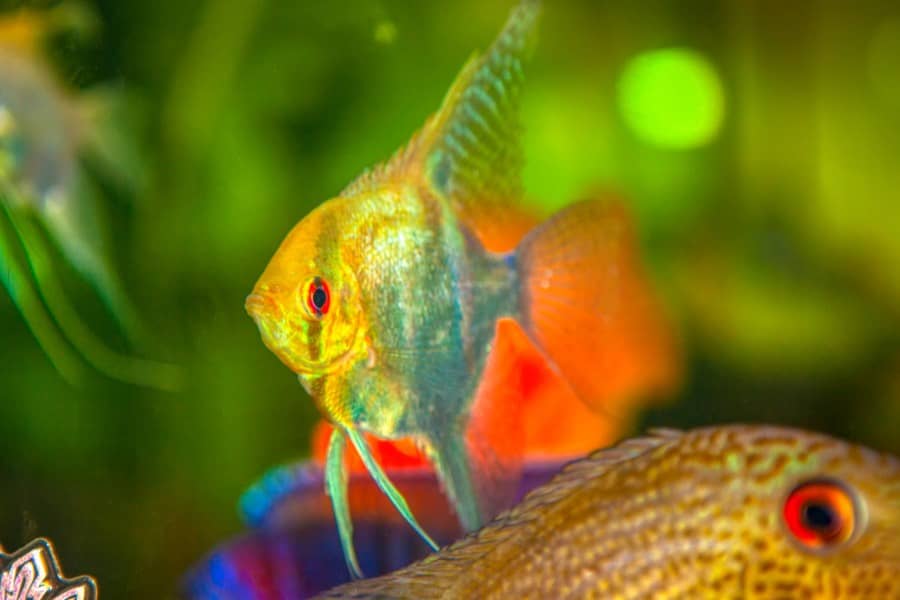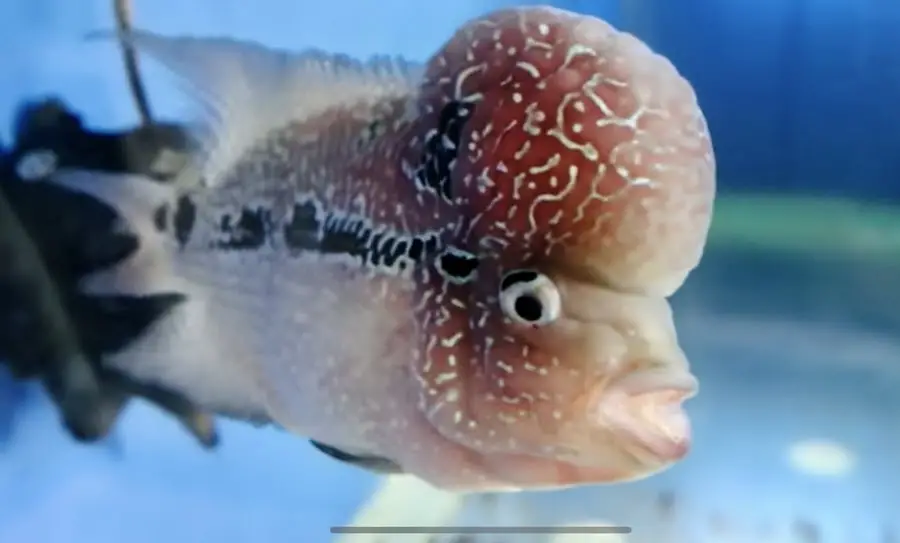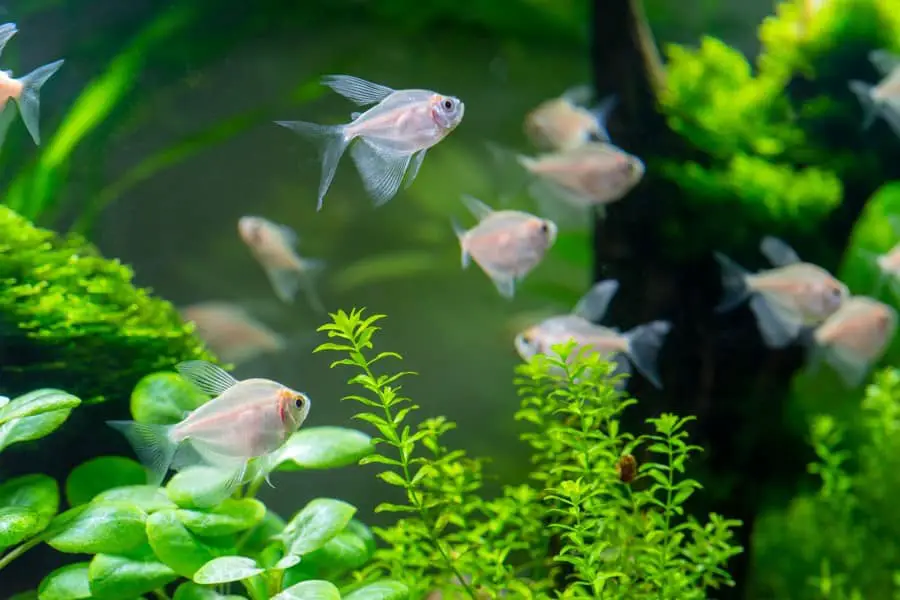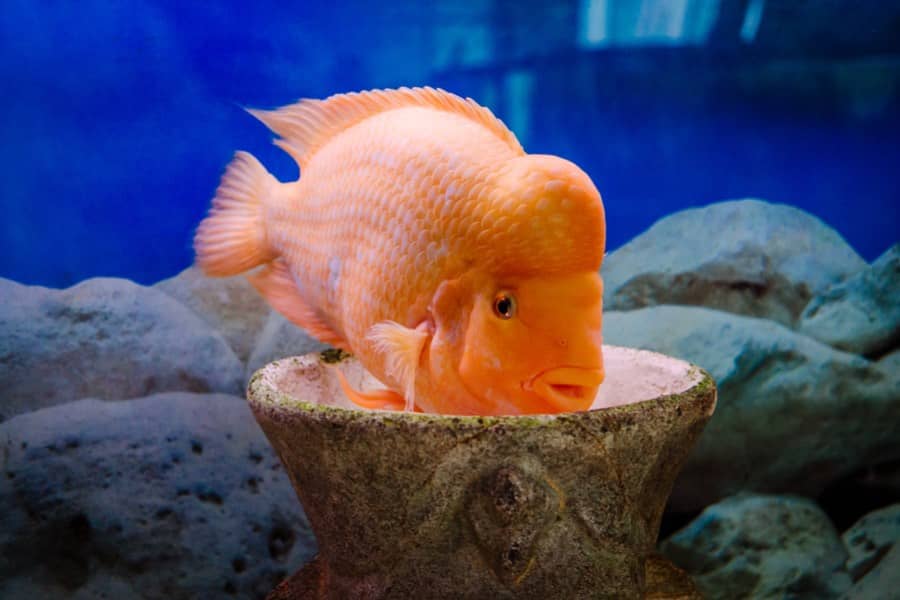How To Treat Hexamita Disease In Aquarium Fish?

For an aquarist, facing fish diseases is an inevitable part of the hobby. When I first came to know that my cichlid has Hexamita, I was completely clueless about the condition. So I studied about the disease and consulted various fish care services. Fortunately, I was able to cure Hexamita in my fish.
Metronidazole (Flagyl) is quite an effective medication used for treating Hexamita. If the infection hasn’t gotten worse and your fish is eating, give the medication into food. Or you can treat the aquarium water with it. Besides medication, do regular water changes and improve your fish’s diet and nutrition.
In a nutshell, this is all that you are required to do to get rid of Hexamita. Read through the following sections if you are interested in knowing the cause of the disease, early warning signs, and how to prevent fish hole-in-the-head. Everything you want to know about Hexamita, its maintenance, and its treatment is covered here in this article.
What Is Hexamita Disease in Fish?
Hexamita is a flagellated protozoan. In simpler terms, it’s a microscopic parasite that is found in the intestinal tract of various freshwater and saltwater fish species. Fish highly susceptible to the protozoa are Cichlids, including Oscar, Discus, and Angelfish.
Occasionally, Hexamita can be found in healthy fish. However, various conditions such as poor water quality, malnutrition, shipping, and overcrowding may lead to the rapid production of the Hexamita protozoa resulting in a deadly disease.
Causes of Hole in the Head Disease
Hole-in-the-head is also known as head and lateral line erosion (HLLE). Many people use it interchangeably with the term Hexamita. Technically, they aren’t the same thing, and here is why:
Hexamita is a parasite found in the gastrointestinal tract of a fish. It’s believed to be the primary causation for the hole-in-the-head disease because, in every case of HLLE, you will find one thing common: the presence of Hexamita Parasite. However, it is not certain.
If your fish is diagnosed with head and lateral line erosion, it can be due to poor water quality, malnutrition, and overcrowding. The relationship of Hexamita with HLLE is reasonably well-established.
Fish species such as discus and cichlids often seem to carry this parasite. However, under normal circumstances, when the organism is present in small numbers, it doesn’t cause any harm to the fish. It is only when the fish’s immune system gets weakened that the parasite starts reproducing rapidly and causes the infection.
The lesions you see on your fish head are likely to be caused by Heximita. When parasites migrate into the head, they decay the surrounding tissue. The damage to the epidermis allows secondary infections to set it and make conditions worse.
Early Warning Signals of Hexamita in Fish

Hexamita is a slowly progressing disease. If you identify the early signs and start the treatment immediately, you can control the infestation from getting worse. Following are some of the potential symptoms that you shouldn’t overlook.
- This disease usually starts with a pimple on the head. And as the infection continues to grow, the sore spreads over the large area, causing lesions in the epithelium.
- Physical signs of Hexamita include weight loss, refusal of food, and decreased activities.
- Fish infected with Hexamita tend to excrete white and slimy feces.
- The skin is the first line of defense, any sign of the infection should visibly appear. If you notice any difference in the fish coloration or the skin getting darker, it’s a noticeable sign of Hexamita.
- Notice your fish fins. If they are closely held to the body, it signals an illness.
- The swimming behavior of the infected fish will be changed. You will find it a bit sluggish and unusual on watching closely.
- Particularly, when angelfish is suffering from Hexamita, they may lie horizontally on the surface with a swollen abdomen.
If you see any of these above-mentioned symptoms in your fish, start the treatment immediately.
Is Head and Lateral Line Erosion Contagious?
Yes or no.
An infected fish carrying the parasite can transmit the disease to other fishes. But if your resident fish is healthy, they probably will not get infected. Eventually, it comes to the ability of the fish to fight it off.
Weak and stressed fishes seem to be highly prone to infection. Therefore, it is not worth taking the risk. It will be better to treat the condition entirely before transferring the ill fish with other fish families.
How to Treat Hexamita: Curing Hole In the Head Fish Disease
As we know, it’s almost impossible to determine the exact cause of the disease. There can be one or more reasons contributing to the spread of the infection. Therefore, we will try to rule out all possible causations to get rid of the problem.
Medication
Metronidazole is the recommended medication for treating head and lateral line erosion in fish. It is commercially available with the name Flagyl. It’s readily available to aquarists to buy over the counter. In some places, you may be asked to show a veterinarian prescription.
You can give Metronidazole to your infected fish either in medicated food or bath treatment.
The recommended dosage is 50mg/kg body weight (or 10mg/gm food) for 5 consecutive days. Or you can simply add two tablespoons of Metronidazole to each pound of fish food as one tablespoon weighs around approximately 2.25 gm.
If your fish is severely affected and doesn’t seem to be eating, you can resort to your final option. Treat the aquarium with medication. Mix 18.9 mg/ gallon metronidazole one time daily for three days. This might not be as effective as medicated food. Since parasites have originated from the intestinal tract of the fish, treating the condition internally is more beneficial.
Environment
A healthy fish tank environment is a major contributing factor in treating hole-in-the-head disease. But, what is a happy and healthy aquarium looks like?

First of all, make sure your tank isn’t overcrowded. A fish require ample space to swim freely. It’s not a choice but a necessity. If not provided, it will cause stress to the aquatic pet hampering their growth and taking a toll on wellbeing. Overstocking is one of the main reasons that has been identified with fishes infected with Hexamita disease.
Improve your aquarium’s water quality by doing regular water changes – 30 to 50% a week is recommended. Check your filtration system and make sure it is doing the job well. When treating an infected fish, it’s crucial to clean the gravel and filter material every once in a while. It will help eliminate the parasite from the environment and stop it from growing.
To determine your fish tank’s water quality, check for nitrate concentration, especially when Hexamita is concerned. You can aim for 20 mg/l. Under no circumstances should nitrate concentration exceed the mark of 50 mg/l. Hike in the nitrate levels is often due to the organic waste (mainly uneaten food and fish poop) decaying in the tank and breaking down into harmful chemicals.
Diet
As we know, hole in the head disease is also linked with malnutrition. Having nutritional deficiency weakens the fish’s immune system and causes serious stress, making them more susceptible to Hexamita and other infections.
Therefore, it becomes crucial to improve the diet of the fish when trying to cure the disease. You can visit any local fish store and consult them for species-exclusive food.
Having met all nutritional requirements and ideal living conditions will almost always lead to a healthy aquatic environment.
Tips to Prevent Hole In The Head Disease

To safeguard your little aquatic pets from diseases and fatal infections, you must adapt to the practices given below and stick to them.
- Keep your aquarium clean and free from all organic waste. Do regular water changes and have adequate filtration. Introduce a good amount of oxygen in the water.
- Create a healthy diet for your fish. Provide them with the right amount of food that contains all the necessary minerals and vitamins.
- Avoid overstocking.
The overall aim is to strengthen the fish’s immune system by removing all stress-causing conditions that weaken it. When your fishes are healthy, they can fight diseases and save themselves.
Considering all these above-mentioned points will significantly reduce the likelihood of the fish hole in the head disease occurring.
Also, be on the watch for any potential symptoms that your fish might start to show. Diagnosing the disease in its early stages and initiating the treatment is probably the only way to effectively prevent deadly infestations.
Conclusion
Applying the measures given in the article will surely help you get rid of the Hexamita in your fish. There is nothing hard or complicated about treating the hole in the head disease or HLLE. All you have to do is simply follow the mentioned practices, and depending on the severity of the infection, soon enough, you will be able to cure the problem.
